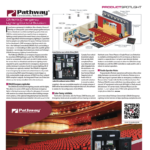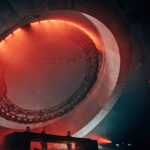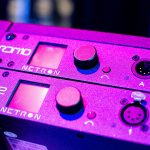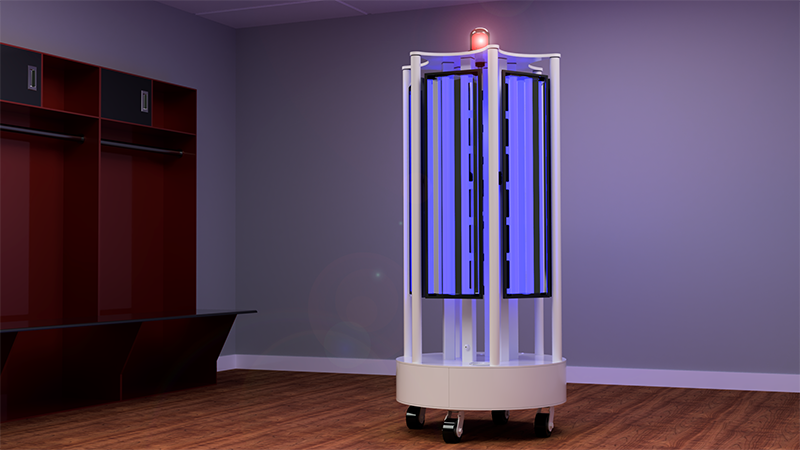
Few things have the power to change entire industries within the span of a few months. Government actors with regulatory power, of course; sweeping cultural changes, and, quite self-evidently, global pandemics. None have any accurate predictions about the future state of the industry, and those who claim to are wrong, even if they’re right. But out of the messy months following the genesis of Covid-19 arose truly inspiring displays of the human power to innovate. As makers of light, we have a unique expertise in putting it to use. Not only to amuse, entertain, and enthrall, but to harness the power of light to aid in what is truly one of our most important human endeavors right now — the protection of our health, on a larger scale than perhaps ever before.
UV Light: Dangers and Benefits
With this, we turn to UV light, well-known as a source of skin damage and occasionally spectacular lighting effects. Ultraviolet light, which covers parts of the visible spectrum from around 400 nm down to completely invisible ionizing (and quite hazardous) wavelengths around 10 nm, can do spectacular damage to eyes and skin, as anyone who’s ever suffered a painful sunburn knows. The same properties that can damage our exterior human shells, however, can — at the right wavelengths and exposure times — prove deadly to pathogens such as SARS-CoV-2, and it is these properties that are of intense interest to those seeking to help those at the front lines of protecting our health.
Enter Crossfade Design, an Indiana-based design firm that’s worked on the largest shows, from Usher to HBO Boxing. This lighting firm has designed state of the art installations of lighting systems for several of the country’s newest sporting arenas. They were keen to help the sports players feel confident and safe coming back to work. Seeing a need for fast, efficient, and most importantly thorough decontamination of rooms ad surfaces, they have developed a line of two solutions utilizing UV-C wavelength light: the Nemesis UV-C Tower and the Nemesis UV-C Rack.
UV-C light falls between 280-100nm wavelength and has been recognized as germicidal for many years. UV-C lights are used in industrial water decontamination, disinfection of laboratory, surgical, and medical equipment. UV-C light, unlike some longer wavelengths, has a limited ability to penetrate into the deep layers of skin tissue, but this does not ameliorate the danger. High doses of UV-C light can cause sunburn-like damage to the upper layers of skin, but the more significant hazard is in eye exposure, where it can cause acute and long-term damage to the retinas of the eye. For this reason, ensuring that areas where UV-C is in use as a disinfectant are access-controlled is of the utmost importance. While, of course, the current pandemic is the source of much of the sudden interest in using UV-C light as a disinfection technique, UV-C light is effective against a wide range of airborne, waterborne, and surface pathogenic micro-organisms, including influenza, SARS, hepatitis, typhoid, and others. And as a purely physical method of disinfection, there’s no worry about residual chemicals or residues left on surfaces after disinfection.
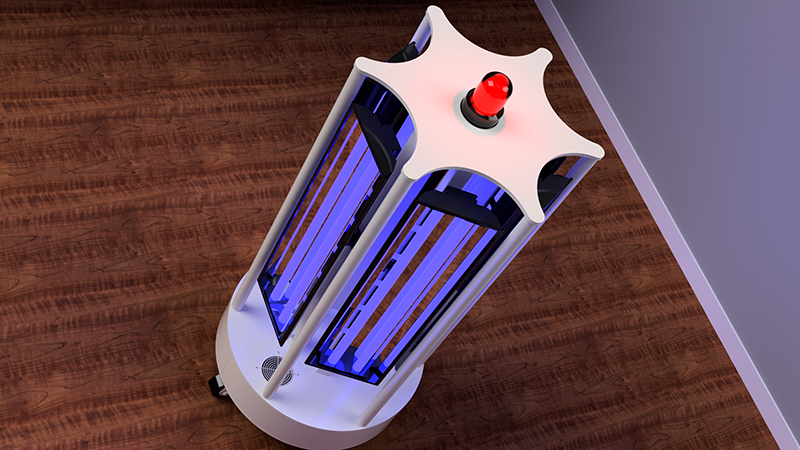
Nemesis UV-C Tower
The Nemesis UV-C Tower is a large rolling light “tower” with high-output UV-C radiators arranged in a star pattern, radiating outward from a heavy central base which houses the power supply, cooling, and electronics for control. The tubes point directly outward for a 360-degree disinfection capability, bathing all unobscured surfaces in the germicidal light. The unit, while large, comes with installed casters and hand holds to make maneuvering the system in tight hallways and spaces easy. Intended for use in spaces like locker rooms, dressing rooms, and workspaces of all kinds, the Nemesis Tower’s portability makes ideal for touring situations. An as accessory, the Nemesis Tower has an ATA flight case available.
Crossfade rates the Nemesis UV-C Tower as being able to achieve a 99.99 percent reduction in virus, bacteria, mold, and fungal loads in two hours in a 40-by-40-foot room, and 20 minutes in a 20-by-20-foot room, but here we sound a note of caution. Every room is going to be different, and the effectiveness of the decontamination process is highly dependent on the distance to the source, power, and time, with longer doses at a higher energy level generally corresponding to increased deactivation of the pathogens in question. As there currently exists much uncertainty regarding the exact doses needed for inactivation of SARS-CoV-2, Crossfade recommends UV-C doses at the upper end of what is required to kill the hardiest viruses, for an extra factor of safety. As always, the most reliable source of up-to-date information about disinfecting surfaces are expert sources like the CDC, WHO, and pathologists who study infections, so please bear this in mind when using any device like this for room disinfection.
Avoiding human exposure to the UV-C radiation is critical, and in keeping with its health-focused mission, the Nemesis includes occupancy sensors, and 85db alarms together with bright LED lights to alert nearby personnel of the potential exposure danger. While the tower model contains a traditional red flashing police beacon, the Nemesis UV-C rack includes an LED ribbon that goes around the top of the carrier. When the system is engaged, the bright LED will be red. When it is safely disengaged, it turns green.
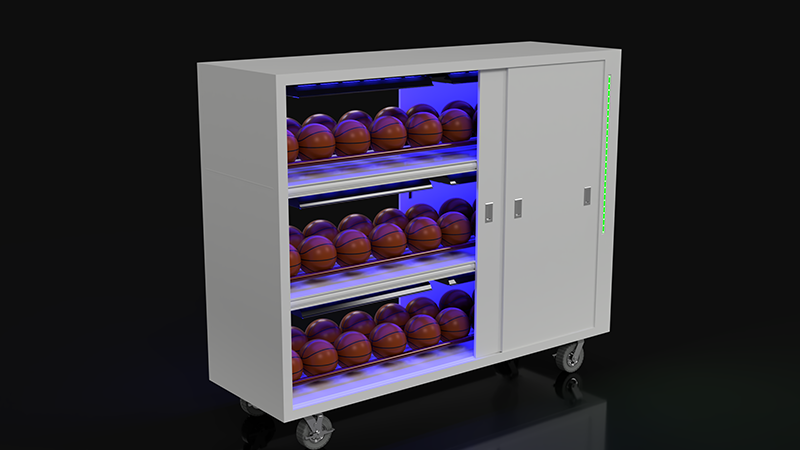
Nemesis UV-C Rack
Next, we look at Crossfade’s Nemesis UV-C rack, specifically designed for the decontamination of masks, helmets, sporting equipment, or any other small to medium-sized equipment. Using 12 UV radiators, it is constructed in a modular manner, with a removable and reconfigurable specialty rail system, which allows the users to house a variety of items for decontamination or reconfigure for different applications. Easy to roll into different rooms on the rubber foam-filled tires, the Nemesis UV-C Rack closes the decontamination area for user safety and can be personalized with custom branding.
Both units can accept power in from 110V to 220V AC, can be activated via remote fob or with Wi-Fi capability with the option to remotely manage the units from a custom phone or tablet application. Crossfade also provides design, layout, and specification of all their UV-C systems, as well as on-site supervision, focus, and activation of their systems together with personnel safety and operation training to ensure safety at all stages of operation. Of course, 24-hour support is available as well.
These two units are just the tip of the iceberg for Nemesis. They have just begun offering the Cart Trek and Golf Trek systems. The Cart Trek models are designed for freight and shopping carts. Picture a 10-foot-long box with an opening at each end. These Nemesis devices are 5’ wide and 6’ tall. They have electric doors that lock when the machine is activated and open when the sterilization is done. They have a slightly larger model for driving golf carts right into them. Those models can fit two golf carts at once.
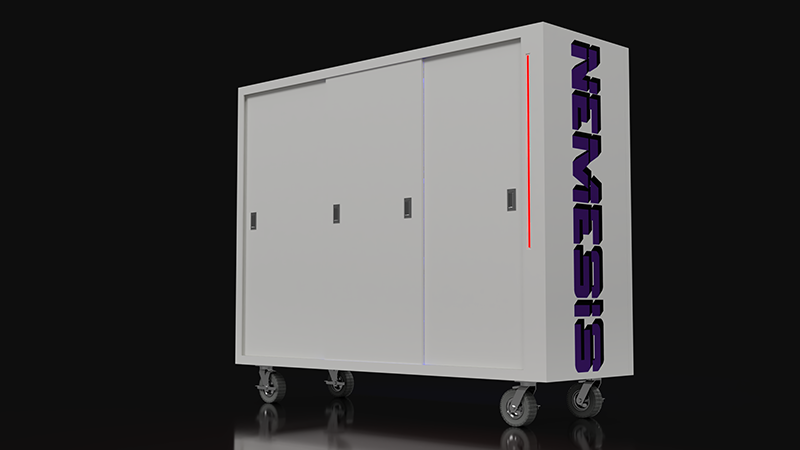
The Cart Trek system is open ended, so multiple sections can be connected in a row. Conveyor belt options are available for each. Airlines have now contacted Crossfade Design about using these for their baggage. Arenas and airports are contacting them to use the Trek systems for their freight as well. Users can put a cart against a wall and have a forklift drop the palette right into the box to get “baked” then remove it two minutes later for safe delivery.
Crossfade Design is now working on a Nemesis product that combines arena house lights with UV-C lights in one pod. The idea being that users can turn off the traditional houselights and turn on the UV ones to sterilize large arenas after crowds disperse. As of this week the company is experimenting with the manufacturers of Ribbon Lifts to see if they can invent a pod that lowers these house light fixtures down from their high positions. The closer the light to the surface, the less time it takes to kill the germs.
Safety has been something this team has spent countless hours evaluating and insuring. They have utilized full studies on UV treatment of germs from Harvard University among others. Says owner Eric Wade, “There have been full tests done on all kinds of materials with UV-C lighting. While it is extremely dangerous to skin, it has little impact on rubber, cloth and other materials. Since the 70’s, almost everything made has been UV treated for protection from the sun. We would have to leave a basketball inside one of our chambers for sixty straight days to see any kind of effect on the material. Leather, such as the kind used in footballs, is already chemically treated to last and our machine has little effect on them.”.
The actual light bulbs for the Nemesis fixtures last over 9,000 hours at full power and it’s recommended that they be changed out every year. The new bulbs cost $32.00 US each to replace.
For More Information
You can contact Nemesis through their website, nemesisuvc.com, or by phone at 972-423-0075. Theresa Harris and Stacey Labarbera are answering the phones. As for MSRP pricing, prices subject to change and all devices can be redesigned and built to specification. At this writing, the following MSRPs were released: Tower: $16,995; Cart Trek: $16.995; Golf Trek: $19,995.
